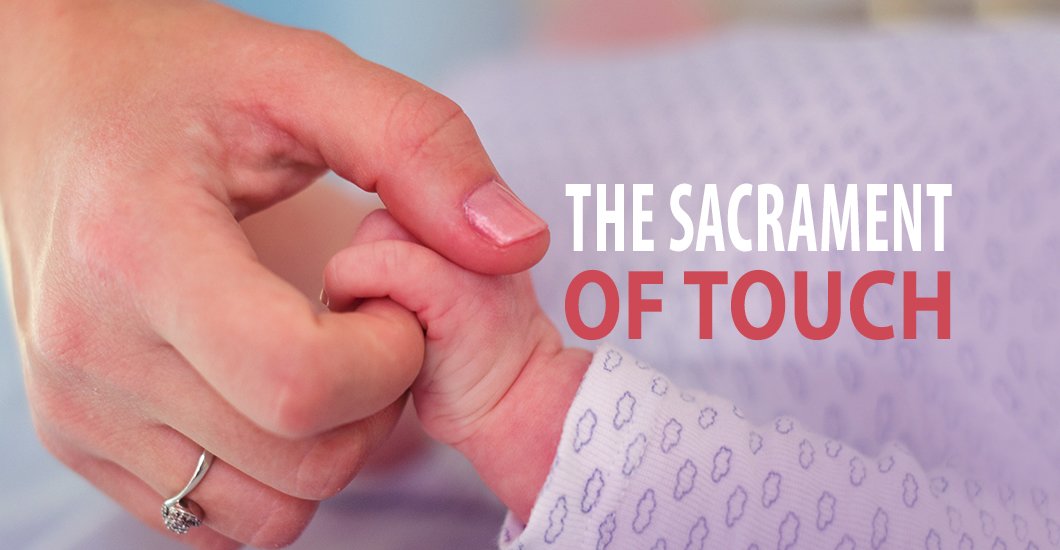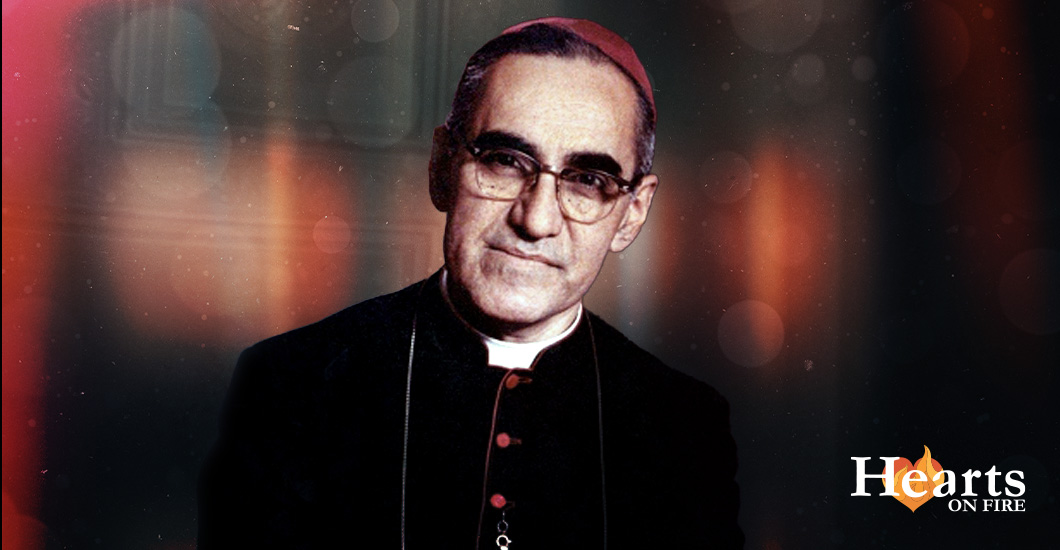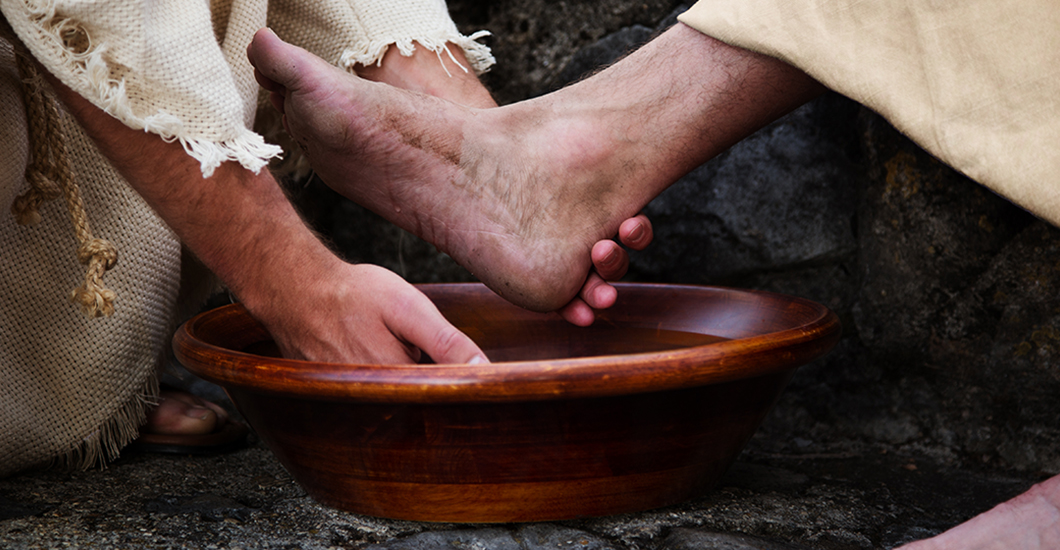Trending Articles
The Sacrament of Touch
In 1986 the Sea of Galilee receded during a drought, exposing an ancient fishing boat, 27 feet long by 7.5 feet wide. It was taken to a nearby kibbutz where it was carbon dated. As it was proved to be approximately 2,000 years old and designed to carry between 12 and 15 fishermen, the locals called it the “Jesus boat.”
When a group of tourists were being shown the boat, a young man asked if he could touch it. The archaeologist on duty explained that it was not permitted. However, when he admitted that he had touched the boat himself in the course of his work, the young man immediately touched him, and his fellow pilgrims followed suit. It all happened so naturally and spontaneously and in turn demonstrated a deep belief that something precious can be communicated by touch.
It is a conviction that the heart of the Gospel story, begins with a very special touch—the touch of God. When the “finger of God’s right hand” touched the Virgin Mary, she conceived by the power of the Holy Spirit so that the love of God Himself was made flesh within her womb. As He grew “in wisdom and understanding” under the influence of the love that had conceived Him in the first place, He was able to communicate to others something of what He had received by His own sacred touch. It enabled Him to heal, make whole and even rise from the dead. Although He was moved by compassion to help people in their physical need, the power of His love that could be seen by all, symbolized a far deeper spiritual power—one that could bring not just physical but spiritual healing along with inner transformation. This spiritual power was handed on to the first Apostles so that they also could hand on to others what they had received from the Lord Himself.
The love that had been received by Jesus in the fullest possible way on the first Easter day was passed on to the Apostles and used by them and their successors—as a sacred and holy touch to be handed down to successive generations. This is why touch is so important in the rites of Christian initiation. It means that the love of Christ that was communicated to us at baptism has been literally handed on for almost 2,000 years. In short, the priest whose hands were laid on us at Baptism had received the sacred touch himself from the Bishop who ordained him, and he had received it from the Bishop who had ordained him and so on in an unbroken line that goes back to Jesus Himself. Through this sacred touch we are given the very love of God that can be transposed into an ever more perfect way of loving that reach out from us to others.
The loving touch of married couples then becomes the means by which the divine is communicated through the human to each other and then onto their children. The power of this love is dependent on the selflessness with which it is both given and received as their lives unfold. There is no other sacrament that so embodies the mystery of the incarnation as the sacrament of marriage, to which most of us are called and in which the majority of us are first formed.
I only came to understand this properly myself when my mother died. Every morning before the funeral, my father woke me up with a cup of tea, sat on my bed and began to tell me a story that I had never heard before. It was a love story— the story of my father’s love for my mother and her love for him. He told me that they had received help and understanding through the first major crisis in their marriage from a childhood friend, Dom Aidan Williams (Abbot of Belmont Abbey from 1940 to 1948).
By the time I was born, my father said he had entered into what he could only describe as an emotional limbo land where the feelings, the emotions, the passions that had once been so important in their relationship seemed to have all but disappeared. My mother seemed to find herself in a similar plight. Dom Aidan Williams was a deeply spiritual man who was able to show my parents that their love had not come to an end but to a new beginning. Love, he taught them, can never be judged in this life by feeling, but by giving—by giving even when you do not feel. In fact, giving without asking for anything in return is the most perfect expression of love. This is the highest form of loving possible on earth. This is the meaning of the Cross—it is a symbol not just for Christians but for all men and women who want to enter into the fullness of life. Only through a spiritual dying to self through selfless giving can a person open himself or herself fully to love, without which life has no ultimate meaning. He showed them how, with the best will in the world, the most idealistic of men and women will always come to an impasse in their spiritual journey, when the poverty of their own imperfect love suddenly becomes a barrier to receiving, in ever-greater measure, the love they want to receive without measure.
As they came through that first major crisis in their married love, my father discovered, in the months and years that followed, how a new dimension gradually began to open out in their life together. Precisely because they had suffered and sacrificed together they became surer and securer in each other’s love. There were moments when they were bonded together more perfectly than ever before, when they were united in mind, heart and body in an experience that bordered on the ecstatic—an experience that is completely unknown to the person whose idea of love never rises above the purely physical.
This new understanding of their married love did not mean that all their troubles and problems were over—far from it! What it did mean was that because of this new development, all the troubles, all the problems which they did have to face, could be faced because they could be faced together, with an inner strength from God, whose love they had ministered to each other.
They met Dom Aidan later when he was posted to Sant’Anselmo, Rome, as the Procurator General of his Order. He told them that the way they had been living out their married life has been an inspiration to him and many others—so impressed by the way they had lived and loved each other, and brought up such a fine family. He explained to them a theological theory close to his own heart, more common in the Eastern Church than in the West—the theory of “physical redemption” that had been developed particularly by the Greek fathers, the short of which is that redemption, or salvation, is brought about by touch, the touch of God. Christ is the touch of God, whose physical presence sanctified a world of matter and form, of flesh and blood, by entering into it. Then through touch, He communicated the love that filled Him to others, who would go out and—by their physical presence, their touch—would communicate to others what they had received.
This then, Dom Aidan explained, was the meaning of the laying on of hands that has characterized the Sacraments from the beginning. Love is communicated by touch. This is the tradition that literally hands on the faith that is not a body of facts but a body full of love, raised up on the first Easter to enter into all who would receive the touch of life. The Apostles, already touched by the Holy Presence, were penetrated through and through on the first Pentecost and went out to communicate what they had received to others. The hands, then, that touch and transmit the life of God to you at baptism were themselves the recipients of a touch that can be traced without break all the way back to Jesus.
Dom Aidan explained to them how the physical and intimate loving that was at the heart of their married life was a profound continuation of this process, and not just a continuation but a celebration, in which the love they both received in the sacred touch of baptism was progressively brought to perfection. Not only did their physical marital loving bring Christ’s life to take birth again in each other, but it overflowed to the children who had been the fruit of their loving—a love that was now literally embodied in their sons, who in their turn would communicate to others what they had received from the touch of their parents.
David Torkington (www.DavidTorkington.com) is a Spiritual Theologian, Author and Speaker, who specializes in Prayer, Christian Spirituality and Mystical Theology. He was educated at the Franciscan Study Centre, England, and the National Catholic Radio and Television Centre, Hatch End, London, where he was later appointed to the post of Dean of Studies. He was extra mural lecturer in Mystical Theology at the Dominican University in Rome (The Angelicum). In addition to giving Retreats and lecturing all over Europe, he undertook five prolonged lecture tours to Africa, mainly Equatorial Africa, speaking on Prayer and Spirituality to Religious, Monks, Diocesan Priests and lay people. His personal spirituality is predominantly Franciscan, his Mystical Theology Carmelite, all welded together with a solid blend of Benedictine moderation. He has sold over 300,000 books in more than twelve different languages. His most successful book is "Wisdom from the Western Isles," the popular "Peter Calvay Trilogy" (Hermit, Prophet, Mystic) re-edited in one volume in which he teaches the reader how to pray, from the very beginning to what Saint Teresa of Avila calls the Mystical Marriage. He is at present working on his latest book, "Wisdom from the Christian Mystics" which will be followed by his autobiography "Injured Innocence." When not writing, he spends time on his boat on the peaceful Beaulieu river in the New Forest, Hampshire, and exploring the Jurassic coast, Dorset. He is a member of The Athenaeum, Pall Mall, London. The three books mentioned in the article are “Wisdom from the Western Isles, Wisdom from Franciscan Italy” and “Wisdom from the Christian Mystics.” All are available from Amazon.co.uk or Amazon.com or from any bookshop.
Latest Articles
Want to be in the loop?
Get the latest updates from Tidings!








